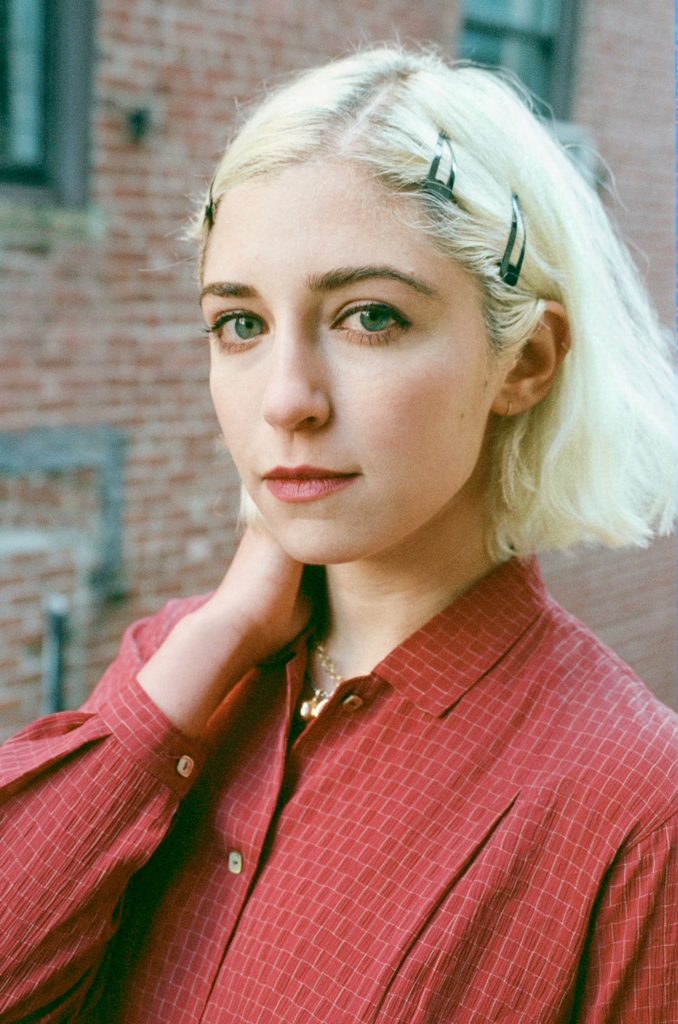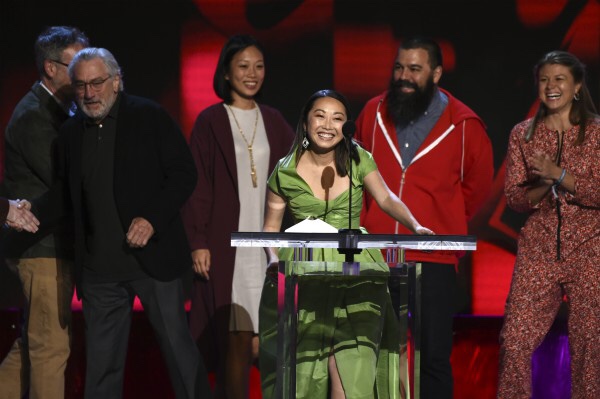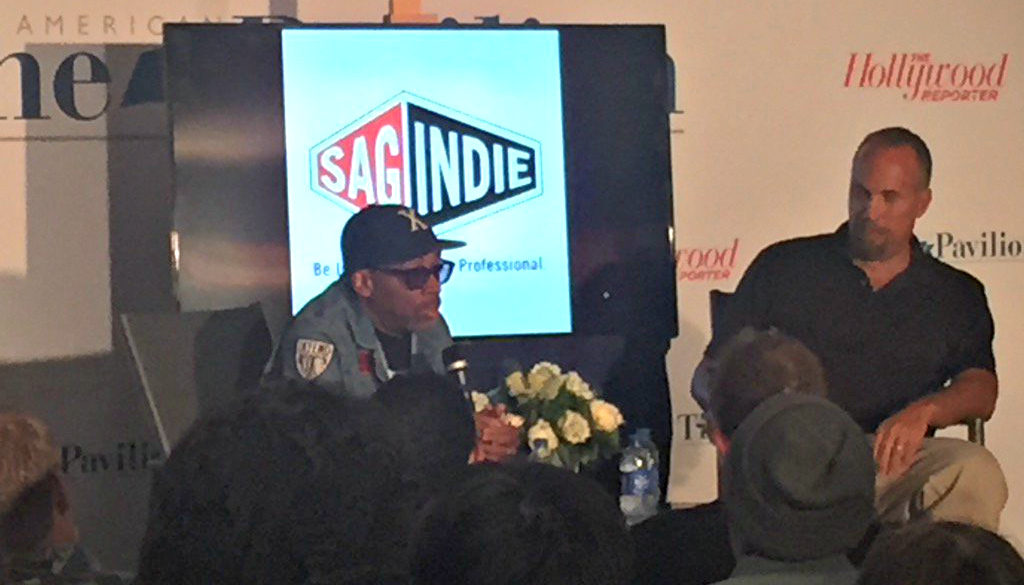Although she’s a new talent behind the camera, ANNABELLE ATTANASIO has more or less lived her entire life in the entertainment industry. The daughter of a director/producer mother and writer/producer father, Annabelle followed in the family footsteps – though at first, she took a slightly different route. She became a professional actor as a child and her career in front of the camera really took off with starring roles in Steven Soderberg’s Cinemax series The Knick in 2015, and CBS’s Bull the following year. Since departing her most recent series, Attanasio turned her attention to a passion that runs in the family: Writing and Directing.
Helming a handful of short films eventually led Attanasio to her feature debut as screenwriter and director, MICKEY AND THE BEAR. The drama – starring Camila Morrone and James Badge Dale – centers on the codependent relationship between a daughter and father in rural Montana, and the effect addiction, PTSD, and poverty has on the small familial unit. Co-starring Rebecca Henderson, Calvin Demba, and Ben Rosenfield, Mickey and the Bear premiered at the 2019 SXSW Film Festival. Following SXSW, it screened at the Cannes Film Festival and went on to win the Grand Jury Award at IFFBoston. Annabelle also won the Adrienne Shelly Foundation Excellence in Filmmaking Award at the Nantucket Film Festival, in addition to being selected for the Film Society of Lincoln Center’s Artist Academy and the IFP No Borders Project Forum and Co-Production Lab.
Following its successful festival run, upstart distribution company Utopia (founded by actor/filmmaker Robert Schwartzman) picked up the rights to Mickey and the Bear, which is now playing in select theaters and opens in Los Angeles on November 22. We spoke with writer/director Annabelle Attanasio about the academic inspiration for her film, her transition from acting to directing, and more.
——
COLIN McCORMACK: You sort of grew up in the industry and have been acting since you were young. How early in your career did you start to have an eye toward writing and directing?
ANNABELLE ATTANASIO: It kind of took me working professionally as an actor for a couple of years to realize that I wanted to be in a position where there was more leadership available to me. As an actor, you have tremendous power, but at the end of the day, you do not have final cut and there’s really no way for you to have control over what makes it into the film. Whereas as a writer/director, you build the story from the ground up and you bring hundreds of people on board with you to help you realize the vision that came from your brain. So for me, that really resonated more, as in shepherding a project from the genesis to the release into the world. It just feels more fulfilling.
CM: In terms of trying to have a little more control, a lot of actors will write roles for themselves. Was it ever the plan that you would act in Mickey and the Bear?
AA: I think going back five years ago, I was definitely writing a role and writing a person that I related to on a very emotional level. Because in a lot of ways, I had lived through elements that Mickey experienced myself. The final character that you see is so much of Cami [Morrone], but it’s also so much of me. I definitely drew from myself and as a writer who’s also an actor, you think of yourself sometimes in what you’re writing. But once I decided that I really was serious about getting this movie off the ground, it was a very deliberate choice not to act in it because I knew I not only was not right, but I didn’t want to have these experiences writing, directing, and acting.
CM: Were there directors you worked with throughout your career that had a significant impact on how you developed your own directing style?
AA: Very much so. One of the most formative experiences I had on a set was working with Steven Soderbergh on The Knick. His directing approach informed a very large part of the way I work as a director. I really admired the way he shoots in a very economical way and edits on the day and… shoots the scene with a really strong point of view. I think The Knick was such a testament to that. And what I loved so much about the way he dealt with actors was when I auditioned and was called back and whatnot, he was very intentional with the casting. But when I got to the set the direction was very minimal and very behavioral.
For me, I actually prefer to cast people without auditioning them. With Mickey, we did a lot of auditions because I truly did not know what Mickey was going to be. Cami wound up being [her], she just was Mickey, but it took me seeing so many people in order to find her. But with Ben, Rebecca, Calvin, and Badge, I just cast them. Ben is a friend and the others I was just a fan of and cast them because I had a hunch that they would be right from their other work and from meeting with them. That’s really the way I prefer to do it. Because again, going back to Steven, he just casts people and he really trusts them and guides them in this really unobtrusive way. But he does a lot of the work with the camera, the way he shoots things and the way he edits, and I really, really look up to him in that way.
CM: I’m always interested in hearing from actor-filmmakers on what that experience is like during the casting process. Usually, you’re on one side of that process, and when you’re auditioning people for your own film, now you’re on the other. Do you think you came at it with maybe a more empathetic eye than filmmakers who don’t act do?
AA: I come at it from a perspective of, I love actors. Regardless of where they’re at or the way their audition goes, I just have such respect for it because I did it for so long. I’ve been performing since I was three years old in plays and musicals and later on television, so I understand from a very honest place what they have to go through and how vulnerable it is. It takes a lot of courage to do it. Coming from that point of view, I think I’m very understanding. Once they’re cast, or even in auditions, all I want to do is figure out how I can best support them, whether it’s leaving them alone or whether it’s giving them tons and tons of research material. I want to make myself available to them so they can feel safe enough to really go to places they can’t predict in themselves.
CM: Were you figuring that out on the set, or did you guys have time for rehearsal or just even spending time together before photography began?
AA: I insisted on having rehearsals ahead of time because I think the rehearsal stage is where actors can get comfortable in their surroundings and in working with each other. A person needs a place where they don’t feel afraid to fail, and sometimes that’s where some of the most brilliant work happens. Rehearsal is also a place where you’re able to try out a lot of your preconceived notions of scenes. You might have a line reading in a scene and you try that out, and that’s the place where you can flip it on its head and you feel safe enough to flip it on its head because you’re not running against the clock the way you are when you’re on set.
We had 35 locations in the movie and one of the great things about our rehearsal process was we would rehearse as many scenes as we could on-site in the location that they were meant to be shot in or at. So the lake scene with Mickey and Wyatt, we rehearsed it on that dock. All of the scenes in the trailer with Mickey and Hank, we rehearsed there. There’s a lot of physical intimacy and physical connection in this movie, and also physical violence, so I think coming at it from a place where I wasn’t telling them to be at 100 and we could mechanically work through it like, “If my hand’s here, and your knee is there, then this feels comfortable to me.” We got a lot of that work out of the way so then on set, the physical trust had already been built so there was at least a foundation there.
CM: In terms of the setting not only being a huge part of the narrative of the film but since you were there early and rehearsing, it was obviously a place you were going to spend a significant amount of time, so what brought you to Anaconda, Montana?
AA: In 2014, I came up with this research project that would study the way veterans’ various traumas affected the family unit. I pitched this research project to NYU Gallatin, where I went to school, to hopefully get a grant and I got it. So that sent me to Anaconda, Montana. Part of my proposal for the research project was to ultimately have my research culminate in a feature film. That was always part of it and I think Gallatin really responded to that since it’s an interdisciplinary school. So I went out to Montana with a DSLR camera and a microphone and people I had met through Facebook who were involved in veterans’ organizations there. I spent so much time meeting people, interviewing people, getting a real sense of the place, and by the end, it was really clear that the film had to be set there. That’s where it was birthed.
I was very interested in the way children are born into this world and a lot of the time they don’t know what cards they’re going to be dealt in terms of how their parents are going to navigate life. So with Mickey, she was thrust into this role of caretaker before she even hit adolescence. I wanted to investigate the way a young woman can navigate that, on top of inheriting and grappling with a parent’s grief and drug dependency and really serious trauma that come with being a Marine.
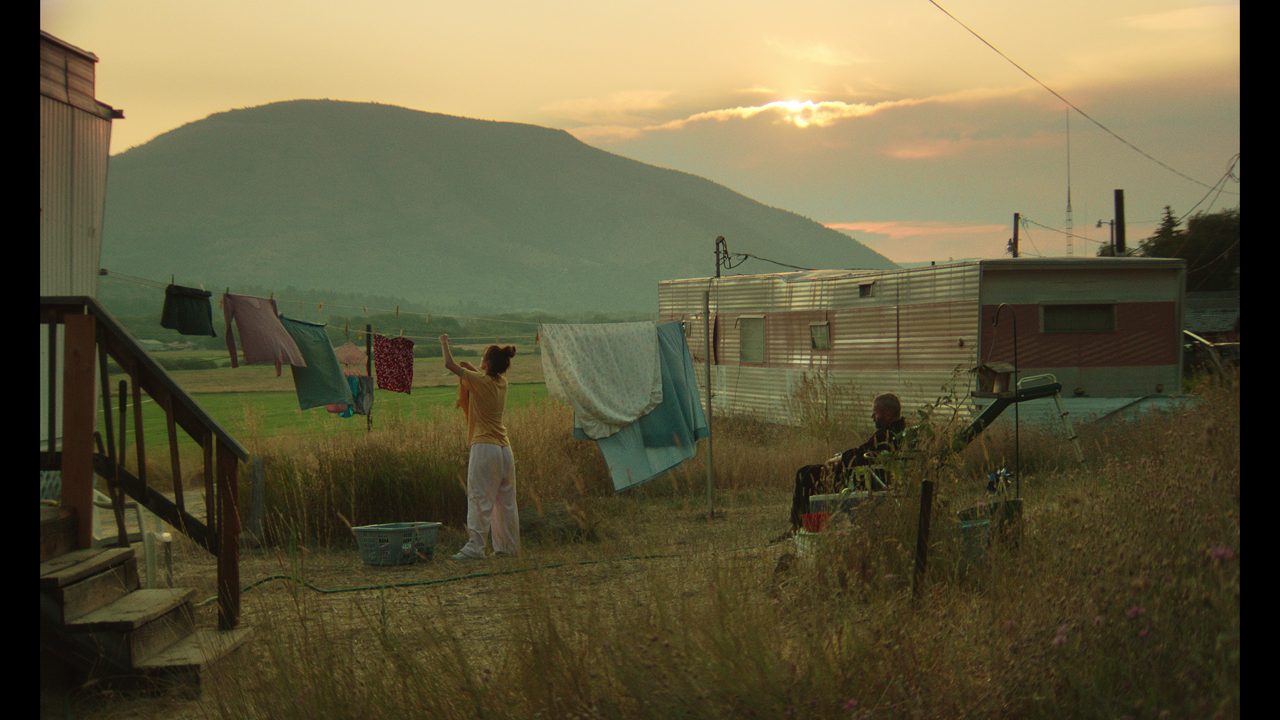
CM: It’s interesting that you did plant roots [in Anaconda] so much earlier from when you started production. Did you have a local support system when you got there and started filming, as opposed to being the crew of outsiders showing up, filming, and leaving?
AA: Oh yeah, that was one of the things that was so beautiful about our process. I had really wanted a strong relationship with people in this town because, by the time I came to shoot, this movie had been in the air for four years. On top of that, more than half of our crew was comprised of Montana locals and people who’d grown up there. All of the actors other than the five principal actors are people who are related to Montana as well. Katee Ferguson – she plays Mickey’s friend Beth – actually grew up in Anaconda. We had this great mixture of people who were coming in from New York and people who were from Montana.
CM: When you’re dealing with some heavy material, did it feel necessary for the cast and crew to find a way to lighten things up when the cameras weren’t rolling?
AA: For me, it was more about what would keep the actors in the moment. Some of them, like Cami, was really able for most of the movie to transition in and out really seamlessly, and that was just part of her work style. Because it could be so dark, she was able to be really fluid. But then there were a handful of scenes where we would keep the set closed, we would keep it really quiet, and I asked that of the crew ahead of time knowing what atmosphere I needed to set for the actors to feel okay. It kind of depended on the scene, and most of the time we were able to break in and out between takes. But also, part of my style I’ve learned is I like to roll for like ten minutes and never cut [laughs]. I find when you cut – I feel like this must be such an actor thing to never cut – but when you cut, there’s this whole flurry of, The light was not right, or, Someone’s costume collar didn’t have continuity. And if you never cut you can’t interrupt the take [laughs]. So that was also a huge part of my style, just going and going and going and keeping the momentum alive and not cutting.
CM: The visuals aesthetic and color palette of the film feels really distinct. What were some of the inspirations you and your DP [Conor Murphy] took to achieve that?
AA: We looked at a lot of films from the ‘70s. Paris, Texas was a really big reference. We shot on Panavision 70 Prime lenses and we wanted to really harken back to this era of cinema that was most inspiring to us, which in terms of American films was the ‘70s. I think because I’m not trained and I didn’t go to film school, I don’t feel so locked in. I would draw from Wong Kar-wai movies and pull those references for colors and lighting because I really loved the vibrancy and saturation that is present in his production design, costumes, and lighting, even though this movie is not at all similar [to his]. I love Nan Goldin‘s pictures. I love the way her photographs are verité but the use of color is so bright and vibrant and evocative. To me, I see the world in a more vibrant, Technicolor way. It’s very rare that I’ll see a movie that’s gray- or blue-toned. I have a strong response to visuals. I really like the use of color and bold lighting styles to really evoke some sort of emotion to the image.
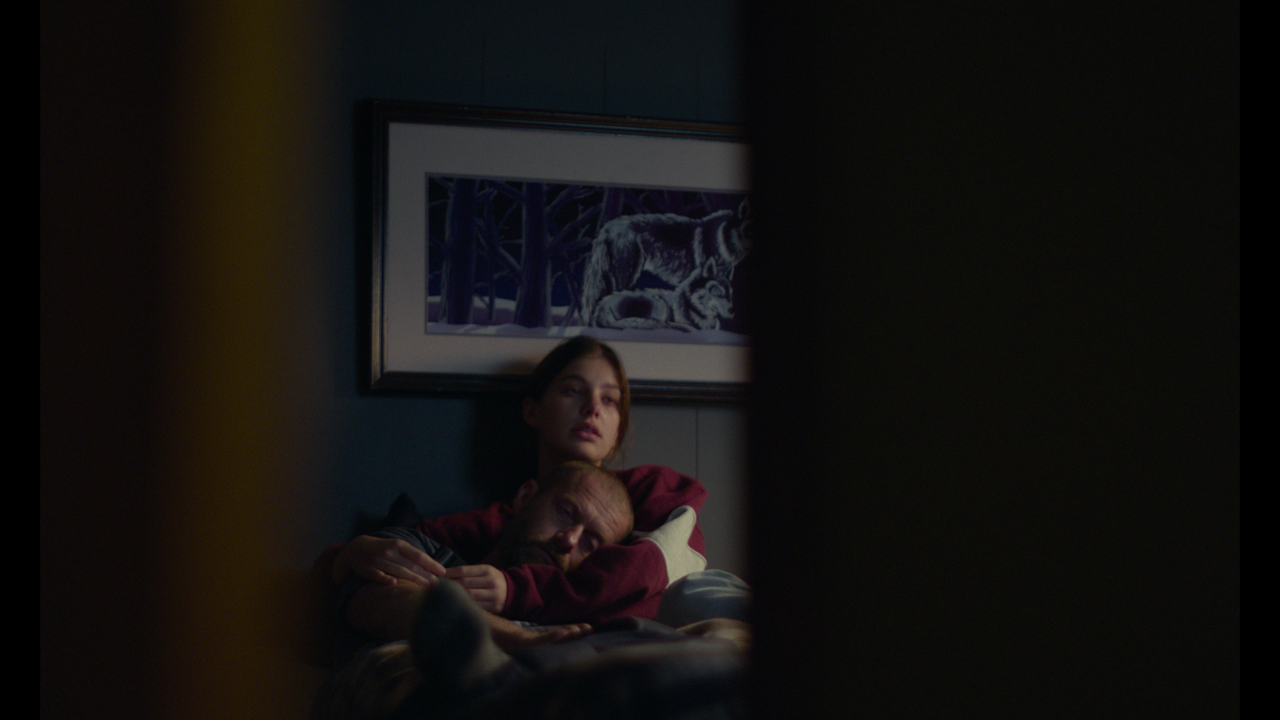
CM: You were a bit under the gun in terms of getting a cut complete and submitted to festivals, from what I read.
AA: Yes, we wrapped at the end of September and the day after, my editor [Henry Hayes] and I flew to start editing. And we didn’t really stop between the end of September and mid-December. Because it’s such a small crew and a limited budget for post, it was this incredible thing of this really small group of people working tirelessly and leaving no stone unturned to get to the edit. The entire process was draining and post was certainly no exception, but I don’t know if I would have it any other way. I do think once you wrap, you’re so in this place of knowing the footage so well and also being so ready to figure out what the story is going to be once it’s edited, that there was an incredible lack of preciousness for both myself and the editor once we got to work. It didn’t feel sentimental. It actually was not hard to cut things, and we cut a lot of things. It wasn’t hard for us to whittle it down because we had just lived in it.
CM: Utopia, who picked it up for distribution, is a pretty new company with a “filmmaker-first” mission, as they say. How has it been working with an upstart company to get the film out?
AA: It’s definitely been very educational in terms of what goes into distributing a movie. What’s been meaningful to me about working with Utopia is they’ve really involved me in terms of the marketing materials, in terms of where the movie’s going to play, and they really honored my ideas. From hearing other peoples’ experiences, I know that’s quite irregular. The movie got off the ground through passionate young people and it was made by very passionate young people and now it’s being distributed by very passionate young people. I think in that way it’s been a really great meeting of the minds.
CM: To wrap things up, what’s next for you on the acting or filmmaking fronts?
AA: I’m writing my next feature, it’s about three-quarters of the way done. I don’t want to reveal too much, but what I can say is as a filmmaker and an artist, I’m interested in exploring the way patriarchy infiltrates different spaces. So with Mickey, for me personally, it felt like the ultimate exploration of patriarchy in the home because it’s a young girl and her father. What could be more of an example of patriarchy than that? My next movie investigates how patriarchy infiltrates the workplace, which is an incredibly charged topic right now in the era of #MeToo and Time’s Up and all of these movements creating awareness for abusive, toxic behavior in the workplace. I’m excited to explore a similar theme in a different context.
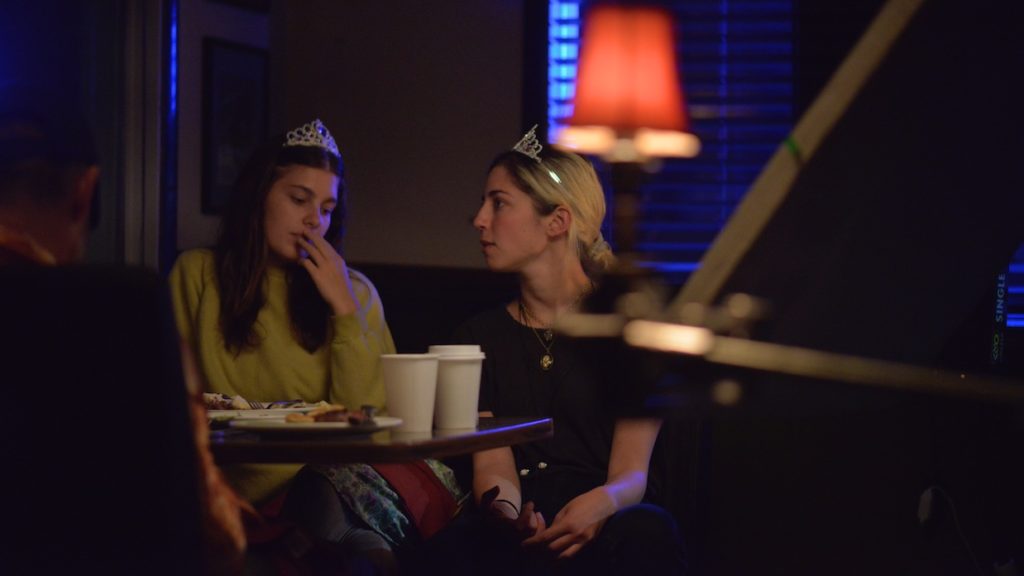
__
Thank you to Annabelle for chatting with us about MICKEY AND THE BEAR. Learn more about the film at mickeyandthebear.com or follow the film on Facebook and Instagram.
This interview has been edited for clarity.
If you’re an independent filmmaker or know of an independent film-related topic we should write about, email blogadmin@sagindie.org for consideration.

